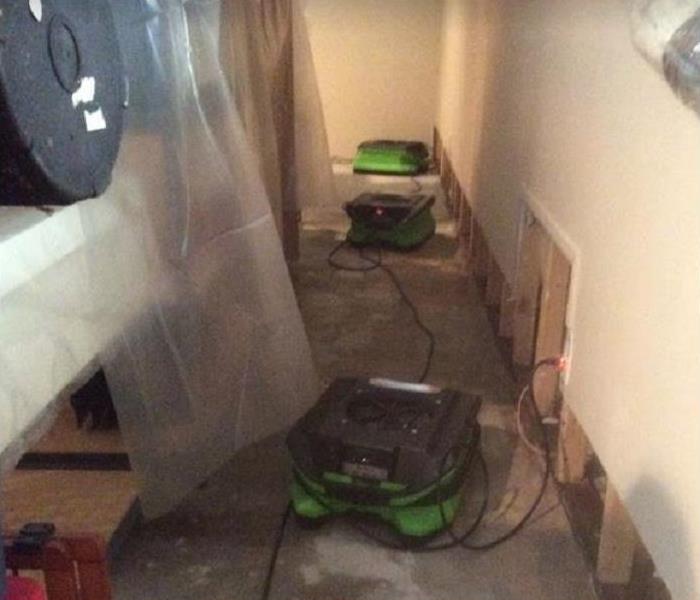Is Flood Damage Causing Your Closter Factories to be Idled?
11/11/2019 (Permalink)
Our Extraction Equipment Speeds Up Commercial Flood Damage Mitigation in Closter's Factories
The constant evaporation and re-condensation that occurs in a still-damp building after flooding in Closter show the continuous circulation of moisture. Even after our pump trucks extract a significant portion of the invasive water, a large amount remains on the floors and lower parts of the walls. At SERVPRO, we want to extract as much of this as we can.
When we further reduce the amount of liquid water inside a factory in Closter, mitigation of commercial flood damage can happen much more swiftly. This method also significantly reduces the damages involved, and also the overall recovery costs. Mitigating this way does not add to the time involved because it makes the following steps involving evaporation and removal of water vapor much more efficient.
Our other extraction machinery includes different pieces. While some of these can remove water from tight spots, like under stationary equipment on your factory floor, others use the weight of the person operating the equipment to help push the water out of carpeting or off other flooring types. Depending on the machine we use, we can pull an additional 10 to 60 gallons per minute out of your facility.
Removing carpet is a cumbersome task, but removing the water beforehand reduces the time involved later. The absence of dirty water in such carpeting makes handling and disposing of it much more sanitary, as well. This same concept applies to other building materials and contents. Removing as much as possible before starting to extract water vapor and dry the structure reduces the time involved. It also reduces the number of materials available to microbes, therefore making it less likely that an infestation might occur.
With less water to evaporate and then remove from your building, the final drying stages happen very quickly. Although flooded buildings receive an initial spray-down with a disinfectant when we first start our work, another application protects your workers from anything that might still have pathogens on the surface. Our Dri-Eas dehumidifiers give us a reading on the machine's panel, so we know the moisture content of the air passing through it. When buildings contain denser materials like concrete blocks, we use one of the DriTec models, instead. Both give us the needed controls over how fast your structure dries out, preventing over-drying.
Over-drying a structure can cause cracks and other problems. We use industry-standard guidelines to prevent this from affecting your factory. When called for, our building services team, General Contractor License # 13VH001305854800, assists with the construction of drying chambers. We use when different materials require higher or lower moisture contents than the surrounding area or its contents.
Businesses in the manufacturing industry within and near Cresskill, Harrington Park, and Dumont can rely on the expertise and specialized skills of SERVPRO of Northeast Bergen County's mitigation team. Flood damage does not need to force your factory closed. We can help restore everything “Like it never even happened.” Call us at (201) 244-0100 to get things started.
More about Closter.






 24/7 Emergency Service
24/7 Emergency Service
